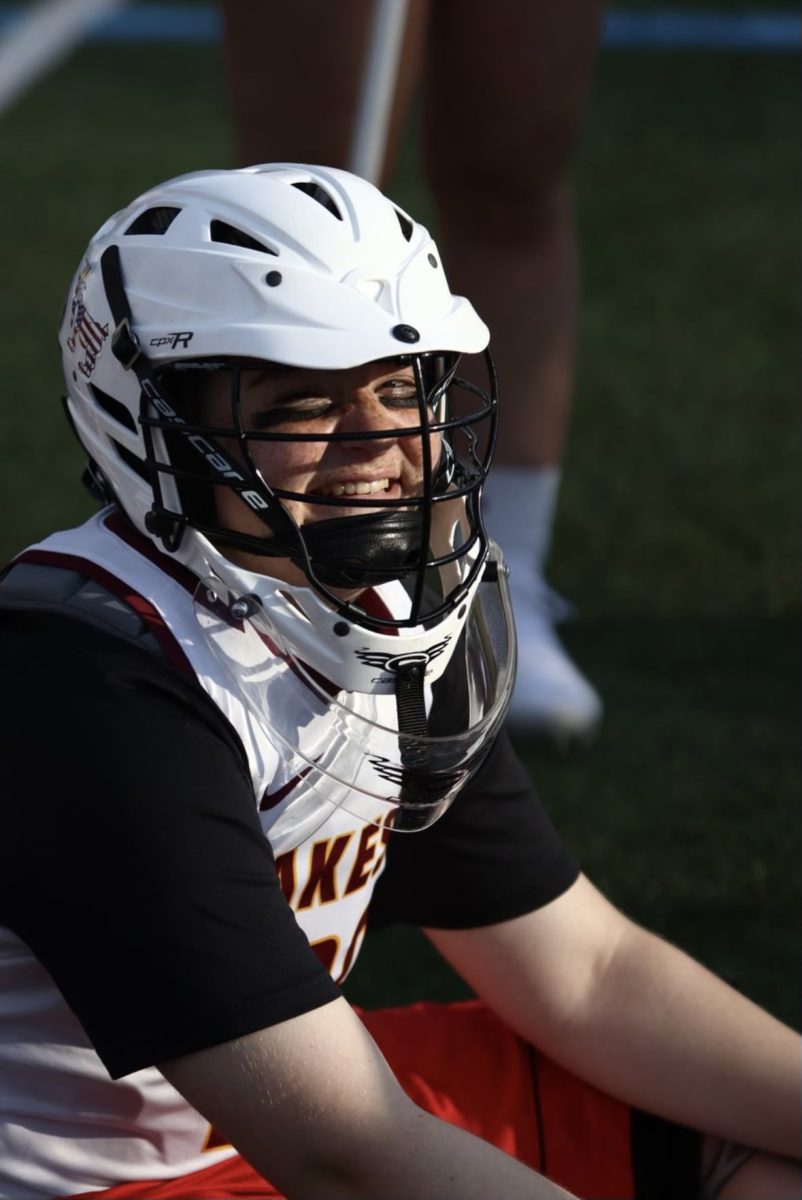Who gets to use one of Lakeside’s two gender-neutral locker rooms on any given day? Well, as one trans student athlete said, “It’s in the name!” These facilities aren’t just for transgender, nonbinary, or genderqueer students (i.e., anyone whose gender identity doesn’t match their sex assigned at birth); they’re for anyone and everyone who needs them. However, since their installation five years ago when the AAC was built, people have consistently used the gender-neutral locker rooms not for their intended purpose, to the inconvenience and discomfort of Lakeside’s trans student athletes. Kyle F. ’25, a trans boy who plays for the girls’ lacrosse team, says that the gender-neutral locker rooms’ misuse has been an issue for all four years he’s been a Lakeside athlete. “They know they’re not supposed to be there,” he says of the people (only other boys, in his experience) who don’t use the facilities as intended. Kyle recounts seeing students go into the locker room during assembly, some even bringing books or homework with them. Locker rooms have two purposes, he explains: changing and “hanging out.” The stress of having to stand up for himself in these situations, usually facing dismissive laughter, was so pressing that Kyle started changing in his car last year, a significant inconvenience before practices and games.
Other trans students have faced similar obstacles. One trans-identifying student athlete said that they wouldn’t be comfortable using the gender-neutral locker room if anyone else was hanging out in it, and that seeing other people using the locker room “creates speculation” about that person’s gender identity, even more so if students are having to wait outside, in view of anyone who walks past. They said that in their opinion, it’s not okay to loiter in the gender-neutral locker room with friends and/or during “peak athletic time” or assembly (since it contains the only gender-neutral bathroom in the AAC — the next closest is in Bliss). Those seeking a quiet or even a social space should look elsewhere, they say; perhaps the Chapel’s practice rooms would be a good alternative.
Lia S. ’25, who used the gender-neutral locker rooms during her sophomore year PE classes, has had a different experience, though it should be noted that this is based on using the locker room in “off times” – i.e. not when changing for practice is necessary. Lia used the locker room mostly for the bathroom and to store her belongings. She pointed out that the gender-neutral locker rooms are typically much more private, something that could benefit a variety of cisgender students: students with disabilities, those who aren’t comfortable changing in front of their peers, etc. Lia says that though there’s no guarantee that the gender-neutral locker rooms will be anonymous, as anyone who uses them will probably encounter other students, anonymity (in that who’s using what locker room isn’t openly discussed) usually seems to be respected.
And it is important to remember that steps have been taken; the gender-neutral locker rooms have certainly done more good than harm. Clarke Clarke ’16, now a Lakeside lacrosse coach, can speak in part to the evolution of trans athletes’ experiences at Lakeside. In the early to mid-2010s when he went to school here, he says that very few people were openly trans and that there weren’t any safe spaces for trans students to change. He didn’t have the opportunity to use gender-neutral facilities partially because, back in his high school days as recently as eight years ago, they didn’t exist. Compared to then, Clarke says, gender-neutral facilities at Lakeside have drastically improved, despite the “random kids occasionally using the [gender-neutral] locker room to goof off and a lack of resources that can be allocated to [gender-neutral] facilities.”
Lakeside is also placing a new emphasis on gender-neutral facilities these days. For example, all the bathrooms in the new academic building will be gender-neutral, says Assistant Head of School Ryan Boccuzzi. The administration has had consistent conversations with students and faculty, including a confidential meeting with trans-identifying students hosted in partnership with GLOW last spring. Based on those conversations, Mr. Boccuzzi has found that Lakeside is decidedly short on gender-neutral bathrooms, and the choice to make all the new building’s bathrooms gender-neutral will be what “serves the community best.” He’s heard complaints and concerns about the gender-neutral locker room and is taking students’ opinions seriously. Mr. Boccuzzi pointed out that, reading between the lines of these complaints, it doesn’t seem that the space was being maliciously disrespected because of transphobia toward Lakeside’s trans students; rather, the problem lies in cisgender students not realizing the significant negative impact they’re having. He hopes to “lean into that” to solve this problem, making students more aware of the consequences of their actions and changing the culture rather than imposing restrictions and rules.
Unlike other locker rooms, the gender-neutral ones are not designed to be social spaces for anyone to use. But should they therefore be restricted only to those who really need them? “I’d rather these facilities be available to anyone than put kids who are already struggling through the incredibly tough act of disclosure,” said Clarke on the issue. Trans student athletes seem to feel similarly. “Who am I to judge who needs the gender-neutral locker room?” Kyle asked. One trans-identifying senior said that officially restricting access to the locker rooms would be “forcing people to come out just to have access to things they should already have access to.” Even so, it’s clear that the culture of respect around these facilities needs to change for the betterment of trans students’ experience at Lakeside.


